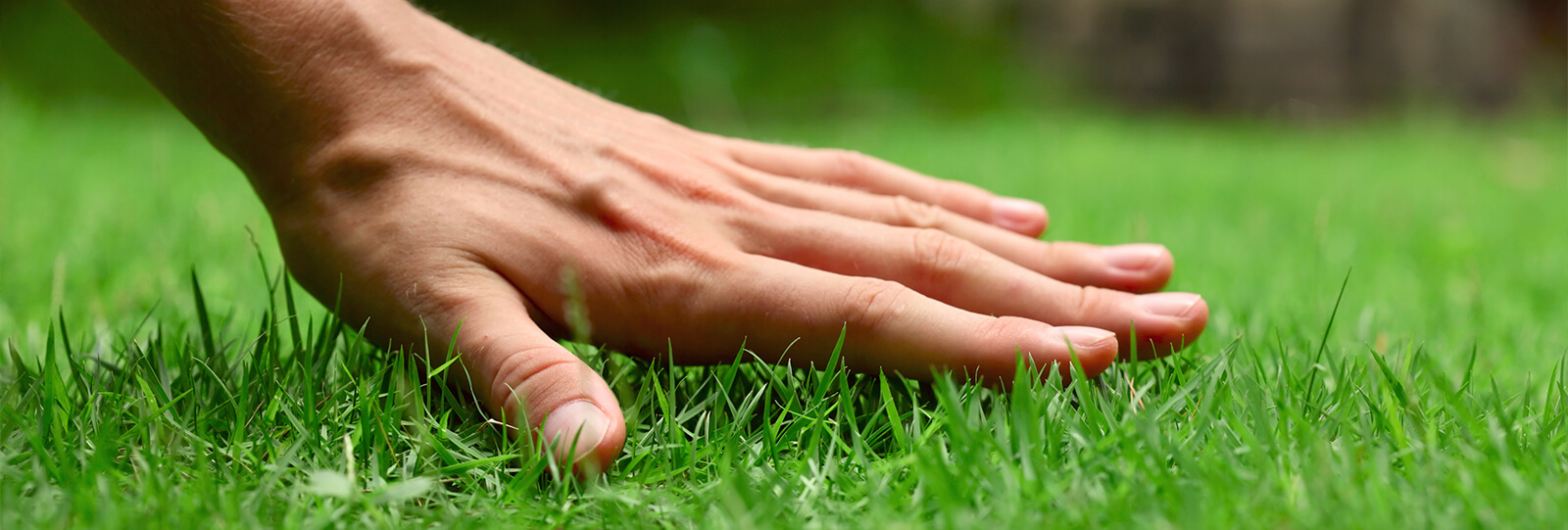
Our Expert Tips for Treating Brown Patch in Lawns
Knowing when and how to fix brown patch in Houston Texas lawns is crucial for keeping your grass lush and green. Big brown stains aren’t exactly a fashionable look in any context, so if you want your landscape looking its best, you gotta be prepared to beat brown patch before it gets out of hand. Many different things can cause it, too, so knowing proper prevention practices will help you a lot down the road.
Brown patch spreads outward quite fast from a central point, so as soon as you start to see brown circular patches popping up in your grass, it’s time to get to work.
We’ve outlined all the basics, from identification to prevention and eradication, so you can keep your lawn free of brown spots. That white blouse, on the other hand? Yeah, we can’t help you with that one—there just seems to be a law of attraction between white shirts and coffee spills that we just can’t figure out.
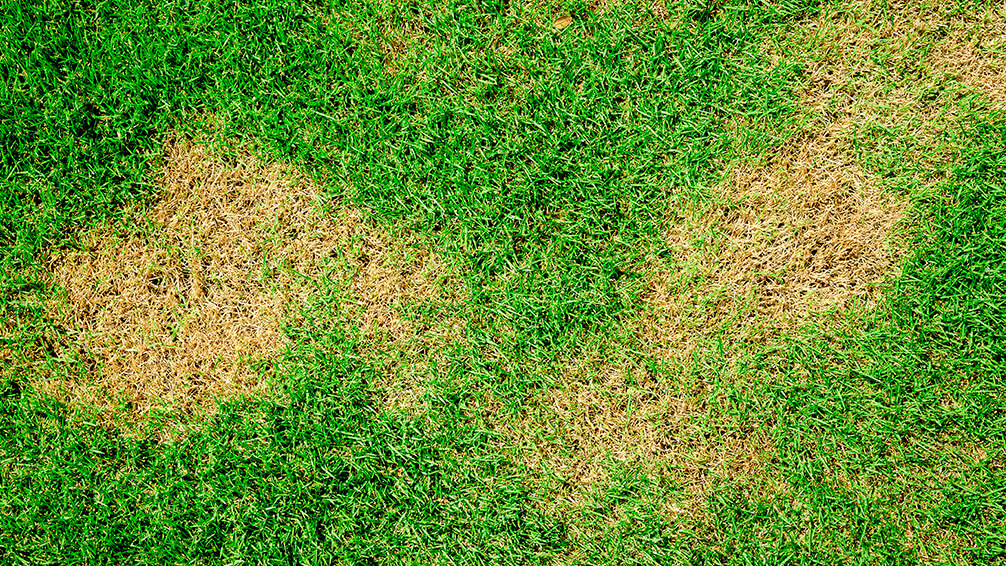
What are Brown Patches in Lawns?
Brown patch is actually caused by a fungus called Rhizoctonia. This tough fungus will lay dormant over the Summer, then spring into action once temperatures start to reach around 70°F, and is at its most potent when temperatures range from 80–85°F. It often pops up right after heavy rain events and cloudy days.
In the very early stages of fungal development, the grass will look wilted and wet, and the grass edges may look wavy. This stage doesn’t last long, though, and soon it will turn into a brown patch that gets matted and sunken into the ground. Brown patch spreads outward quite fast from a central point, so as soon as you start to see brown circular patches popping up in your grass, it’s time to get to work. You may often notice a rusty orange ring around the patches, or spots where two patches meet and form an irregular shape.
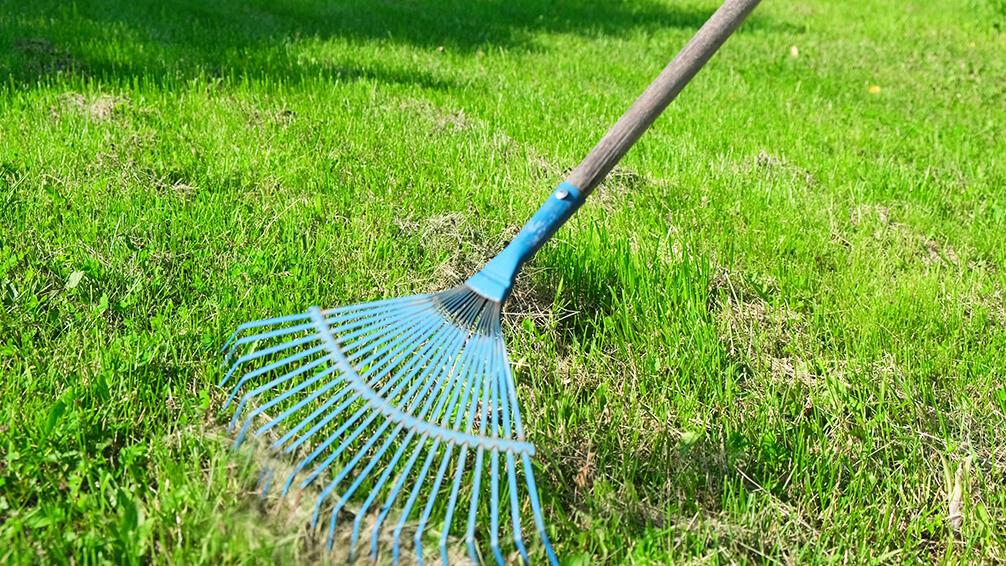
Preventing Brown Patch in Lawns
Since the fungus will lay dormant in the warmer months, one of the important things to do in fall is to make sure your lawn isn’t a hospitable fungus environment. Piles of debris and old leaves make a cozy little hovel for this invader to lurk around in and matted, thatched grass also provides it with a safe spot to hide.
Raking up leaves and stick piles, and dethatching your lawn by pulling a rake through it will help keep things clean with good air circulation. Damp, dark places with no air circulation are pretty much the perfect breeding grounds for fungi. If you’ve had recurring problems with fungal growth in your lawn, you can also use a preventative fungicide if necessary.
Maintaining a consistent watering schedule for your lawn is a good idea as well. Fungus likes moisture, so if you’re drenching your lawn so much that the water doesn’t fully evaporate, you’re in for some trouble. However, if you water early in the morning and give it enough time for the afternoon sun to dry it up, your grass will be much better off. If you notice that your grass is quite dewy one morning, then there’s no need for additional water at that time.
When fertilizing your lawn, avoid using any products with high levels of nitrogen in a fast-release formula, because this can supercharge the development of brown patch. Control any active fungus with fungicide before you apply your Fall fertilizer. Swing by Plants for All Seasons, and we’ll help you find a slow-release formula that’s ideal for your lawn.
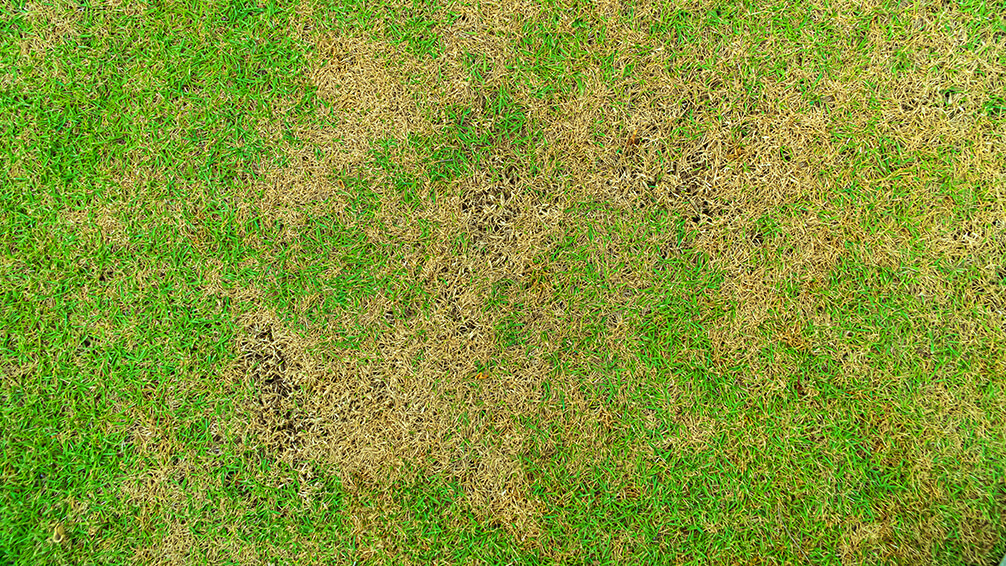
How to Fix Brown Patch in Lawns
Often after you’ve applied the right preventative treatments and figured out a watering schedule, brown patch will begin to clear up on its own, but you’ll be left with some bare spots. Resodding may be necessary.
Now, if you’re dealing with a severe case, you may need to resort to using some fungicide. Most lawns can recover without fungicide, but sometimes you gotta bring out the big guns. If you’re unsure about what to do, take some pictures of your lawn and show them to one of our experts, and we’ll give you some pointers.
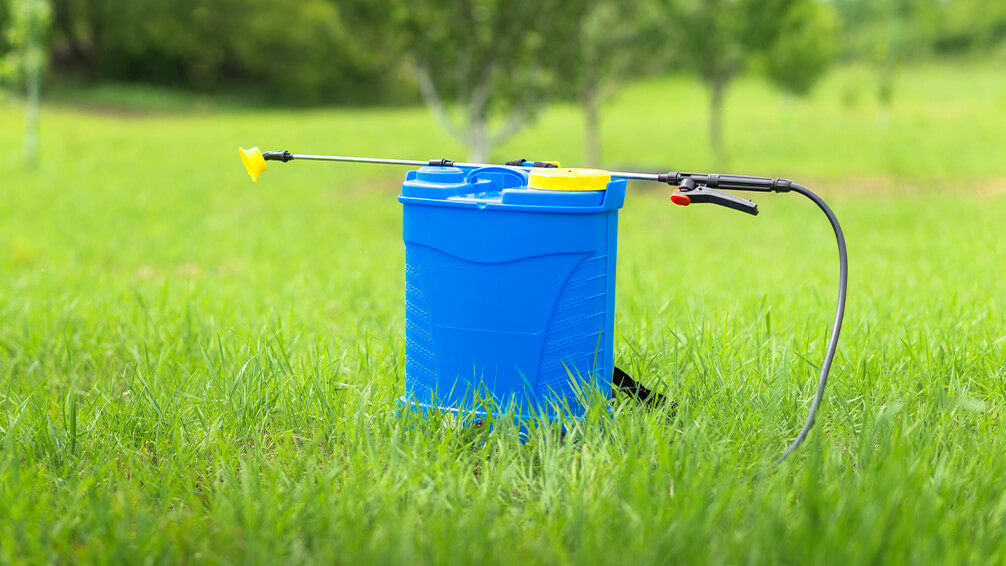
What is the Best Fungicide for Brown Patch?
We carry several different types of fungicides you can use to treat brown patch. Biological fungicides are especially effective if you’re wanting to be more organic in your practices. Apply a thin layer of leaf mold compost and apply MicroLife Micro Gro granules. Heritage or Nitro-Phos Total Brown Patch is our go-to chemical treatment. These can be applied before (preventative) or after (curative) you see spots.
Many powerful chemical-based solutions are available in liquid, powder, or pellet form. Still, caution must be taken when applying these products to prevent injury or illness to you, your family, and your pets. Always read the instructions on the label carefully to ensure you are using proper safety practices. You may need to stay off the grass for 24 hours or more until the product soaks in, so you may want to add some signs to the grass if there are any kids in the neighborhood or dog walkers that pass through.
Now that temperatures are beginning to cool down, it’s time to clean up and prepare your lawn so that you won’t be greeted with a gnarly mess later on! If you need any tools or supplies to prepare your lawn for winter, don’t hesitate to visit us at the Nursery, or place an order over the phone for home delivery or curbside pickup.

